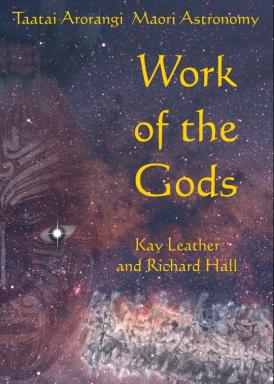Maori Astronomy
It is difficult to know the full extent of astronomical understanding Polynesians and Māori had of the stars. It is certain that the stars were used to navigate across the vast expanse of the Pacific along with expert knowledge of winds, waves, and currents. The arrival of Matariki (Pleiades) in the early June sky is seen as being a sign from those who had passed away. Today, Matariki is the mid-winter celebration for Aotearoa, marked by a public holiday with events based around: Remembrance - honouring those we have lost since the last rising of Matariki; Celebrating the present – gathering together to give thanks for what we have; Looking to the future - looking forward to the promise of a new year.
Māori used stars to direct them on their ocean voyages and, as a guide to the seasons, to enable crops to be planted at the best time.
The term for stars and planets is Te Whanau o Marama - the family of light. Meteors are te mata kokiri - the darting ones. Antares in Scorpius is known as Rehua and "ko Rehua whakaruhi tangata' translates as "Rehua gives energy to man" as it is seen in the early morning sky in spring.and Traditional stories show that the Māori watched the dawn sky more than the evening sky. Dozens of stars and planets were named although the names often vary from group to group. There are many stories of the sky's inhabitants and like other peoples, Māori saw shapes in the patterns of the stars.

The vast majority of Māori astronomical knowledge was lost, as the early missionaries suppressed any indigenous religious (read “heavenly”) thought. The early anthropologist Elsdon Best said in 1922: "Few endeavours have ever been made to collect Māori star lore, and now it is too late to rescue it. The men who knew have passed away." However pre-European of the East Coast of Te Ika-a-Maui (North Island) traditions and starlore were recorded and researched and published in the book "Work of the Gods" by Kay Leather and Richard Hall.
Increasing interest is shown towards maramataka - the Māori calendar. Unlike the Gregorian calendar, maramataka takes into account natural rhythms of the moon cycle and the seasons. Rather than the rigidity of the 5-day working week, and no concession made for shorter winter days for example, maramataka acknowledges the patterns of activity and rest; taking and giving back. There is still much to learn from this ancient wisdom.
